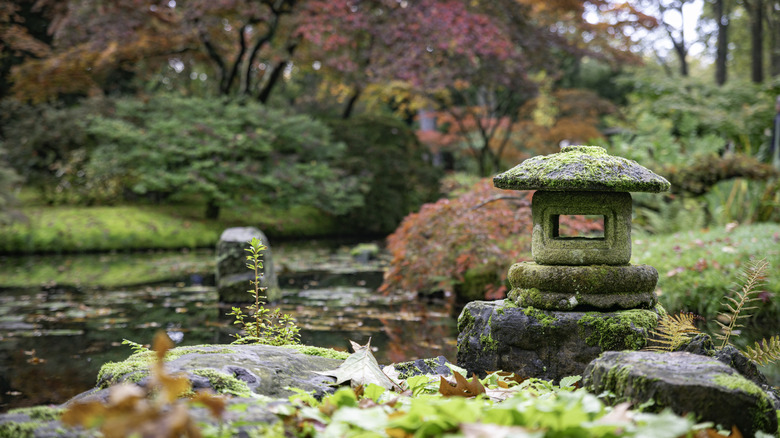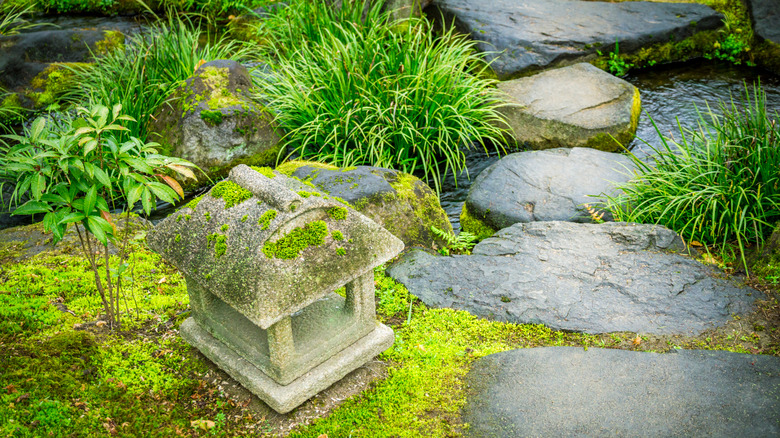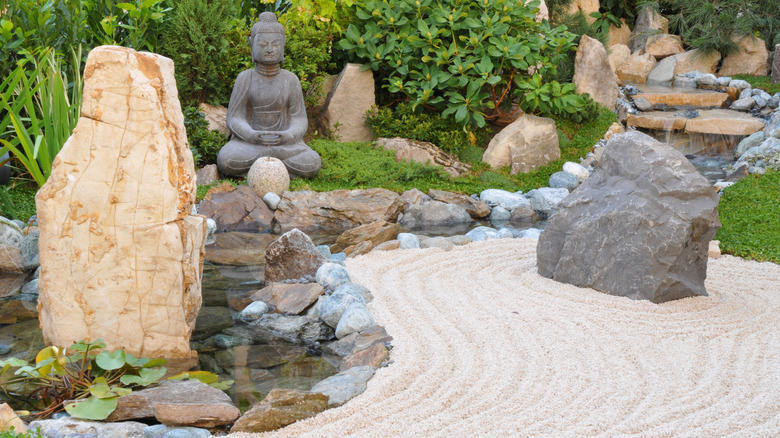Key Components Of A Backyard Japanese Meditation Garden
Japanese gardens are considered among the most beautiful in the world. Meditation gardens, also known as Zen gardens, were originally designed by Buddhist monks to be natural spaces of retreat for prayer and reflection. Although these gardens look very minimal, the creation of them is rooted in three sets of design elements. The first set is conceptual and includes the following guiding principles: austerity, simplicity, naturalness, asymmetry, mystery or subtlety, magical or unconventional, and stillness. There are also five visual design elements that overlap somewhat with the first set: enclosure, asymmetry, borrowed scenery, balance, and symbolism (or representation). Third, to create an authentic Japanese meditation garden based on traditional design principles, you should add these four physical components: stone, water, plants, and ornaments.
Because Japanese meditation gardens are meant to look fairly humble and simple, there's no need to invest a lot of money to create one. Those first three principles of austerity, simplicity, and naturalness are key guidelines to follow and will make your garden look and feel more genuine. In choosing your physical components, start with natural materials found in your area, such as pebbles or larger rocks, and ornaments made of natural materials like wood or stone.
Your water feature should also be simple: a birdbath is more appropriate than an electrically-powered fountain, for example. Instead of having a large number of plants, choose a limited number with maximum beauty and appeal, such as flowering shrubs or trees whose branches look graceful when bare in winter. Some components can fulfill multiple design elements, like the ornamental stone lanterns shaped like pagodas often seen in Zen gardens, which are stone, ornamental, and representational/symbolic.
How Japanese garden design concepts can help you plan your meditation garden
The design principles behind a Zen garden are intended to inspire a feeling of tranquility. These principles can seem somewhat esoteric but provide a useful guide for planning your meditation garden. Austerity and simplicity refer to keeping the design simple, uncluttered, and not opulent. Naturalness means no artificial materials such as plastic or unnatural colors; use natural materials for structures or furniture such as wood, stone, or clay. Some of the design terms are fairly straightforward: enclosure means some kind of fence or barrier or a structure that gives a feeling of seclusion from the surrounding area. In Japan, this might include a small pagoda or temple. You can emulate this with an arbor or gate.
Asymmetry in a Japanese garden evokes the unpredictable qualities of nature. An asymmetrical design should also consider another design element: balance. This refers to placing different elements in a way that creates a harmonious arrangement that considers what draws the eye. For example, a row of smaller shrubs along a stone path can be balanced with one or two larger shrubs on the opposite side. A path of round, flat stones is balanced with tall, slender trees or a rectangular bench.
Borrowed scenery is an element inspired by a distant vista or natural feature, such as a mountain range or lake. This is related to the concept of miniaturization, which means that a Japanese garden presents a smaller, idealized vision of the larger natural world. This principle underlies the garden's purpose of reflection and meditation, emphasizing the human role in nature.
How to create a Japanese meditation garden
There are a number of approaches to creating a Japanese meditation garden, so plan ahead and find what works for your space, skills, and budget. First, consider the purpose of the garden: creating a place for quiet reflection and stillness. Plants can help create the feeling of an oasis of calm amidst chaos and provide a barrier to close out unwanted sounds or sights. Traditional plants and trees for a Japanese garden include evergreen shrubs, Japanese maple trees, deciduous trees, and shrubs that have subtle color shifts with the seasons, mosses, and ornamental grasses. Consider a mix of evergreen shrubs and hedges that can also provide beauty and privacy in winter.
For the stone component of your meditation garden, you can create a gravel path, a walkway made with flat stones, or low stone walls. A koi pond or waterfall looks lovely in a traditional Zen garden, but your water elements need not be elaborate. A stone birdbath or a metal goblet that can catch rainwater will suffice, and both are functional and ornamental. A small water feature can help drown out city noise and create a bit of audio privacy for your backyard retreat.
Avoid complicated structures or too many colorful flowers: aim for a simple, harmonious design. One small bench and/or table should be all the furniture needed. This is not a spot for socializing but for solitude. A simple panel of willow fencing adds subtle structure and privacy. Simple bamboo or metal wind chimes are also a welcome touch. Refer back to the design elements of Japanese gardens for more inspiration and guidance.


